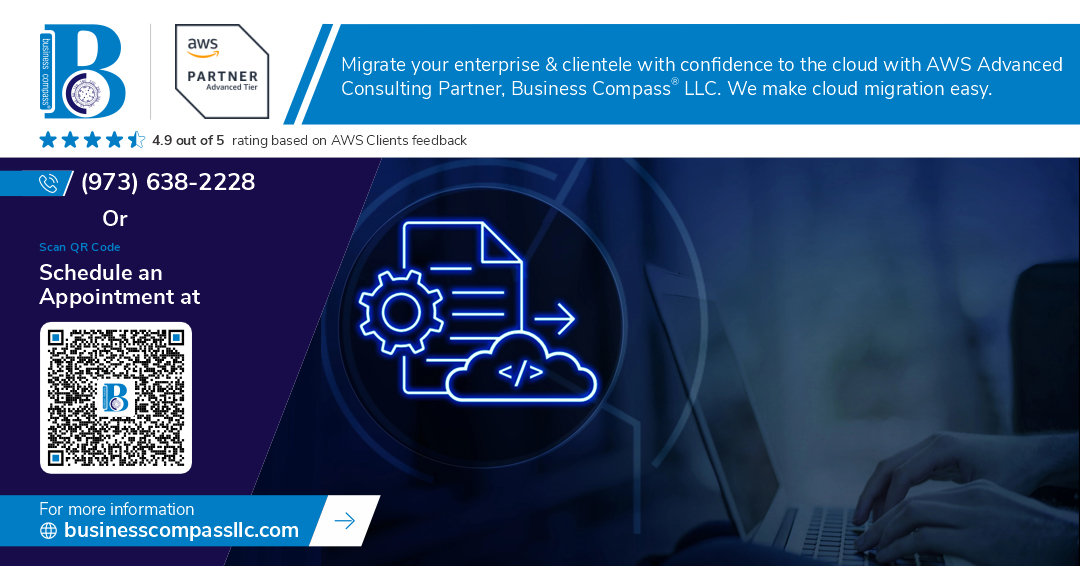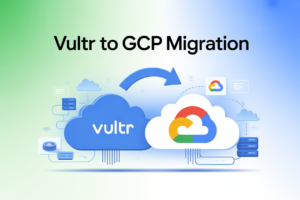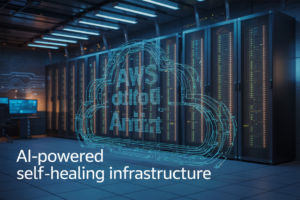Selecting the perfect Infrastructure as Code (IaC) tool can make or break your cloud deployment strategy. This guide helps DevOps teams, cloud architects, and IT managers navigate the complex landscape of IaC options without the headaches of trial and error. We’ll walk through assessing your organization’s specific IaC needs, compare major tools like Terraform, CloudFormation, and Pulumi, and provide a practical decision framework to match your requirements with the right solution. By the end, you’ll have a clear roadmap for implementing IaC that aligns with your team’s skills and your company’s cloud goals.
Understanding Infrastructure as Code (IaC) Fundamentals
A. What is IaC and why it matters for cloud deployments
Infrastructure as Code is exactly what it sounds like – you write code to define your infrastructure instead of clicking through console screens or running manual commands. Think of it as writing a recipe for your cloud environment that can be followed precisely every time.
Why does this matter? Because cloud deployments are complex beasts. When you’re managing dozens of services across multiple regions with various configurations, trying to do this manually is a recipe for disaster. One missed checkbox in a console and your entire system could break.
With IaC, you define everything – networks, servers, storage, security policies – in code files that can be version-controlled, tested, and reviewed just like application code. This means your infrastructure becomes predictable and repeatable.
B. Key benefits of implementing IaC in your organization
The benefits of IaC go way beyond just making deployments easier:
- Speed: Deploy complex environments in minutes instead of days
- Consistency: Eliminate the “it works on my cloud” problem
- Version control: Track every change to your infrastructure
- Self-documentation: Your code becomes living documentation
- Cost efficiency: Easily spin up and tear down environments
- Disaster recovery: Rebuild your entire infrastructure from code
Many teams report deployment speeds increasing by 80-90% after implementing IaC. And when something breaks? You can roll back to a working state in seconds.
C. Common challenges when adopting IaC tools
Let’s be honest – the IaC journey isn’t always smooth sailing:
Learning curve: Your team needs to learn new tools and possibly new programming paradigms. This takes time and patience.
State management: What happens when someone makes manual changes? Your code and actual infrastructure can drift apart.
Security concerns: Hard-coded credentials in IaC files are a security nightmare waiting to happen.
Tool selection paralysis: With so many options (Terraform, CloudFormation, Ansible, Pulumi), choosing the right tool can feel overwhelming.
D. How IaC fits into modern DevOps practices
IaC isn’t just a standalone practice – it’s a core pillar of effective DevOps.
In traditional environments, operations teams were the gatekeepers of infrastructure, creating bottlenecks for developers. DevOps aims to break down these silos, and IaC is the bridge.
With IaC, developers can provision their own environments using approved templates. Operations teams focus on building secure, reusable components rather than executing manual tasks. This creates a feedback loop where:
- Developers commit infrastructure code alongside application code
- CI/CD pipelines automatically test and deploy both
- Monitoring provides feedback on performance
- Teams iterate on both application and infrastructure together
The end result? Faster deployments, fewer errors, and teams that can focus on innovation instead of firefighting.
Assessing Your Organization’s Specific IaC Needs
A. Evaluating your current infrastructure complexity
The starting point for picking an IaC tool is taking a hard look at what you’re working with. Simple infrastructure? Complex multi-cloud setup? Something in between?
If you’ve got a straightforward setup with just a handful of services running on a single cloud provider, you might be overthinking this. A lightweight tool could be all you need.
But let’s say you’re juggling resources across AWS, Azure, and a private datacenter. Now we’re talking complexity. You’ll want something robust that can handle diverse environments without breaking a sweat.
Ask yourself:
- How many different cloud providers do you use?
- Are you managing containers, serverless functions, or just VMs?
- How interconnected are your services?
- What’s your current state management situation?
Map it out visually if you need to. The clearer picture you have of your infrastructure, the better equipped you’ll be to find a tool that fits like a glove.
B. Identifying your team’s technical capabilities and learning curve
Let’s be honest – the fanciest IaC tool in the world is useless if your team can’t or won’t use it.
Take stock of your team’s background. Are they coming from a programming background? Or are they traditional ops folks more comfortable with shell scripts? This matters.
Terraform might be perfect if your team is already comfortable with HCL or similar languages. If your team has Python expertise, maybe Pulumi makes more sense. And if they’re already using lots of YAML in their workflow, Ansible or CloudFormation might feel more natural.
Don’t underestimate training time. A tool with a steep learning curve might deliver long-term benefits, but can you afford the short-term productivity hit? Would a more approachable tool with 80% of the functionality be the better choice?
And remember – enthusiasm matters. If your team is excited about a particular tool, that motivation can overcome technical hurdles faster than you might expect.
C. Determining required integration with existing tools and workflows
Your IaC solution doesn’t exist in a vacuum. It needs to play nice with everything else in your tech ecosystem.
Start by mapping out your current CI/CD pipeline. What testing frameworks do you use? How about monitoring tools? Source control? Ticket systems? Each touchpoint is a potential integration point – or integration headache.
Some key questions:
- Do you need Git integration for version control?
- Does it work with your existing secrets management?
- Will it connect to your configuration management database?
- Can it trigger (or be triggered by) your CI/CD pipelines?
- Does it support your preferred testing frameworks?
The goal isn’t to find a tool that works in isolation, but one that slots into your workflow like it was always meant to be there. Sometimes the “best” tool on paper fails miserably in practice because it forces your team to maintain parallel processes or awkward workarounds.
D. Defining your scalability requirements
Scalability isn’t just about handling more servers. It’s about whether your IaC approach can grow with your organization’s evolving needs.
Think about:
- Will you need to manage thousands of resources or just dozens?
- How often will your infrastructure change?
- Do you need to support multiple teams working independently?
- Are you planning to expand to new regions or cloud providers?
A tool that works beautifully for a single team managing 50 resources might crumble when you’ve got 5 teams managing 5,000 resources across 3 continents.
Also consider state management at scale. Some tools struggle when many people make concurrent changes. Others have brilliant solutions for managing shared state. Your requirements here directly impact which tools make your shortlist.
E. Establishing security and compliance priorities
Security isn’t optional anymore, especially with infrastructure code that could potentially create, modify, or destroy your entire environment.
Ask these tough questions:
- Does the tool support role-based access control?
- Can it enforce policy as code?
- How does it handle secrets?
- Does it generate audit logs for compliance?
- Can it enforce security standards automatically?
If you’re in a regulated industry, compliance features aren’t nice-to-haves—they’re deal-breakers. Look for tools that can prove your infrastructure meets requirements through automated checks and documentation.
Remember that security isn’t just about features but implementation. The most secure tool in the world won’t help if it’s so complicated that your team builds workarounds to get things done. Security and usability need to go hand in hand.
Major IaC Tools in the Market
A. Terraform: capabilities, strengths, and limitations
Terraform stands out as the Swiss Army knife of IaC tools. Developed by HashiCorp, it uses a declarative approach with its own configuration language (HCL) that’s surprisingly easy to pick up.
The real magic of Terraform? It’s completely cloud-agnostic. You can use the same tool and similar syntax whether you’re spinning up AWS EC2 instances, Azure VMs, or Google Cloud resources. This makes it perfect for multi-cloud strategies or if you’re worried about vendor lock-in.
Terraform’s state management is both a strength and a weakness. The state file tracks all your deployed resources, enabling precise updates and deletions. But managing this state file in team environments can get tricky without proper planning.
Where Terraform really shines:
- Multi-cloud deployments
- Complex infrastructure with interdependencies
- Teams that value a consistent workflow across providers
Its limitations aren’t dealbreakers, but worth knowing:
- Steeper learning curve than some cloud-native options
- State management requires careful planning
- More complex setup for simple deployments
B. AWS CloudFormation: when it makes sense to use
If you’re all-in on AWS, CloudFormation deserves a serious look. It’s Amazon’s native IaC service, using JSON or YAML templates to define resources.
CloudFormation makes the most sense when:
- Your infrastructure lives entirely within AWS
- You need deep integration with other AWS services
- You want built-in rollback capabilities for failed deployments
The tool offers “stacks” – collections of AWS resources you can manage as a single unit. This makes complex deployments more manageable and provides a clean way to handle dependencies.
CloudFormation’s drift detection is a standout feature – it can tell you when your actual resources don’t match your template. This catches those sneaky manual changes that cause inconsistencies.
The downsides? CloudFormation syntax can be verbose compared to Terraform, and you’re locked into the AWS ecosystem. But if AWS is your home, that might not matter much.
C. Azure Resource Manager (ARM) templates: best use cases
ARM templates are Microsoft’s answer to infrastructure as code. They use JSON files to define resources and their dependencies within Azure.
ARM templates work best when:
- You’re building primarily in the Azure ecosystem
- You need tight integration with Azure-specific features
- You want to leverage Azure’s built-in policy and compliance tools
The template specs feature lets you store and reuse templates as resources in Azure, making them easy to share across teams and projects. This encourages standardization and reduces duplication.
What sets ARM apart is its tight integration with Azure’s role-based access control and policy frameworks. This makes it easier to maintain security and compliance requirements across your infrastructure.
The main drawback? ARM templates can get unwieldy for large deployments. The JSON format isn’t the most readable, though Microsoft has addressed this somewhat with the introduction of Bicep, a domain-specific language that compiles to ARM templates.
D. Google Cloud Deployment Manager: key features
Google Cloud’s native IaC solution uses YAML for configuration and supports Python or Jinja2 for template creation. This flexibility makes it powerful for complex deployments.
Key features that stand out:
- Preview mode lets you see changes before applying them
- Type providers allow you to create custom resource types
- Integration with Google Cloud IAM for access control
Deployment Manager organizes resources into deployments (similar to CloudFormation stacks), making it easier to manage related resources together. The configuration files are version-controlled, giving you a history of your infrastructure changes.
The tool really shines when you leverage Python for complex logic in your templates. This gives you more programming flexibility than you’ll find in many other IaC tools.
The biggest limitation? Like other cloud-specific tools, you’re limited to Google Cloud resources. If you’re all-in on GCP, that’s fine – otherwise, consider a cloud-agnostic alternative.
E. Ansible, Chef, and Puppet: configuration management vs. IaC
These tools straddle the line between pure infrastructure provisioning and configuration management. The key difference? They’re more focused on what happens after resources exist.
Ansible uses YAML-based playbooks and stands out for its agentless architecture. It’s fantastic for configuring systems and deploying applications, though it’s less suited for creating cloud resources from scratch.
Chef and Puppet take a more agent-based approach, with agents running on managed nodes. They excel at enforcing desired configurations across large fleets of servers.
When to use these tools for IaC:
- Managing hybrid environments with physical and virtual servers
- Configuring operating systems and applications after provisioning
- When you need idempotent operations (running the same task multiple times has the same result)
Many teams pair these tools with Terraform or cloud-native IaC solutions. Terraform creates the infrastructure, then Ansible/Chef/Puppet configures it – playing to each tool’s strengths.
Remember: These tools excel at configuration management but may require more work for pure infrastructure provisioning compared to dedicated IaC tools.
Decision Framework for IaC Tool Selection
Creating a weighted evaluation matrix for your needs
Choosing an IaC tool isn’t a one-size-fits-all situation. You need a systematic approach that aligns with your specific requirements.
Start by listing what matters most to your organization:
- Learning curve and existing team skills
- Language preference (declarative vs. procedural)
- Target infrastructure environments
- Integration with existing tools
- State management requirements
- Compliance and security features
Now assign weights to each factor on a scale of 1-5. Your DevOps maturity will heavily influence this. If you’re just starting out, ease of use might get a 5. For complex enterprise environments, advanced features might weigh heavier.
Here’s a sample matrix to adapt:
| Criteria | Weight (1-5) | Tool A Score (1-10) | Weighted A | Tool B Score (1-10) | Weighted B |
|---|---|---|---|---|---|
| Learning curve | 4 | 7 | 28 | 5 | 20 |
| Multi-cloud support | 3 | 8 | 24 | 4 | 12 |
| Security features | 5 | 6 | 30 | 9 | 45 |
| Community support | 3 | 9 | 27 | 6 | 18 |
| TOTAL | 109 | 95 |
This approach cuts through the noise and gives you quantifiable data for your decision.
Multi-cloud vs. single-cloud considerations
The multi-cloud question changes everything about your IaC selection.
If you’re all-in on a single cloud provider, their native IaC tools often provide the tightest integration and most comprehensive feature support:
- AWS CloudFormation for AWS
- Azure Resource Manager templates for Azure
- Google Cloud Deployment Manager for GCP
But here’s the truth – most organizations are drifting toward multi-cloud strategies, whether by design or acquisition. This is where cloud-agnostic tools like Terraform and Pulumi shine.
Multi-cloud considerations to evaluate:
- Do you need consistent workflows across different clouds?
- Are you concerned about vendor lock-in?
- Will you need to migrate workloads between providers?
- How important is a unified approach to infrastructure management?
The multi-cloud premium: expect to sacrifice some cloud-specific optimizations when choosing a cloud-agnostic tool. What you gain in flexibility, you might lose in native feature support. This tradeoff is worth it for many, but not all.
Community support and ecosystem analysis
The strength of the community behind an IaC tool can make or break your implementation.
Don’t just look at GitHub stars (though they’re a decent initial signal). Dig deeper:
- How active are the forums and Stack Overflow tags?
- What’s the average response time for issues?
- How frequent are releases and updates?
- Are there comprehensive docs and tutorials?
- Does the tool have enterprise adoption stories?
The ecosystem matters as much as the tool itself. Check for:
- Available modules/plugins for your tech stack
- Integration with CI/CD pipelines you use
- Monitoring and observability hooks
- Security scanning capabilities
Community vibrancy translates directly to problem-solving speed. When you hit that weird edge case at 2 AM (and you will), a robust community means the difference between a quick fix and hours of frustration.
Strong communities also signal longevity. Nobody wants to invest months implementing a tool that’s abandoned a year later.
Cost implications: open-source vs. commercial solutions
The “free” in open-source IaC tools comes with invisible price tags.
Open-source options like Terraform have zero license costs, but you’ll pay in:
- Internal expertise development
- Integration efforts
- Support challenges
- Feature gaps that require custom development
Commercial solutions like Terraform Enterprise or CloudFormation with AWS Proton flip the equation:
- Higher upfront and recurring costs
- Lower implementation time
- Official support channels
- Enterprise features out-of-the-box
The real calculation isn’t just license costs, but total cost of ownership (TCO). Factor in:
- Time-to-productivity for your team
- Maintenance overhead
- Required supporting tools
- Training expenses
- Opportunity cost of delays
Many organizations find success with a hybrid approach: starting with open-source versions, then upgrading to commercial offerings as their needs mature and the ROI becomes clearer.
For smaller teams or startups, the learning investment in open-source tools often pays off. Enterprise organizations with complex compliance needs might find immediate value in commercial offerings.
Implementing Your Chosen IaC Solution
Building a proof of concept for validation
Got your IaC tool picked out? Great! Now don’t just dive into production. Start with a proof of concept (POC) first.
A solid POC doesn’t need to be complicated. Pick a small, non-critical workload that represents your typical infrastructure needs. Maybe it’s a simple web app with a database, or a development environment for one of your services.
The goal isn’t perfection – it’s validation. You need to answer:
- Does this tool actually solve our specific problems?
- Can our team work with it effectively?
- How does it handle our cloud providers and resources?
Give yourself a tight timeframe – two weeks max. Any longer and you’re building production code, not testing a concept.
Developing team expertise through targeted training
Your fancy new IaC tool is only as good as the people using it. Training isn’t optional – it’s essential.
Different team members need different approaches:
- For developers: Focus on code structure, modules, and integration with CI/CD
- For ops folks: Emphasize state management and security controls
- For architects: Highlight design patterns and cross-environment strategies
Mix formal and informal learning:
- Hands-on workshops beat slideshows every time
- Pair programming accelerates knowledge transfer
- Internal documentation captures your specific implementation details
Don’t forget to set aside dedicated learning time. Nobody masters infrastructure automation while juggling their regular workload.
Creating reusable templates and modules
The real power of IaC isn’t in writing code once – it’s in writing it once and using it everywhere.
Start building your component library from day one:
- Network configurations
- Security groups and IAM policies
- Standard compute resources
- Database deployments
Think of these as LEGO pieces your team can assemble. Each module should:
- Do one thing well
- Accept clear input parameters
- Produce consistent outputs
- Include proper documentation
Standardize naming conventions and folder structures early. Nothing kills productivity faster than hunting through 15 different directories trying to find that one module someone mentioned.
Establishing version control and collaboration workflows
Your infrastructure code deserves the same respect as your application code. That means proper version control and review processes.
Set clear branching strategies:
- Feature branches for new infrastructure components
- Environment branches for staging changes
- Protected main branch for production-ready code
Enforce code reviews – they catch not just bugs but also compliance issues and security risks before they hit production.
Automate what you can:
- Linting to enforce style
- Validation to catch syntax errors
- Documentation generation
Remember that infrastructure changes can have massive impact. Your workflow should support controlled rollouts and easy rollbacks when things go sideways.
Setting up testing and validation processes
“But it works on my machine” doesn’t cut it with infrastructure code. You need systematic testing.
Layer your tests:
- Syntax validation (catches basic errors)
- Unit tests (verifies modules work independently)
- Integration tests (confirms components work together)
- Compliance tests (ensures security and governance requirements)
Automated testing in your CI pipeline gives immediate feedback. But don’t stop there. Include post-deployment validation that verifies your infrastructure actually does what it’s supposed to do.
And please, test your disaster recovery scenarios. Nobody wants to discover their elegant IaC solution falls apart during an outage.
Measuring Success with Your IaC Implementation
Key performance indicators for infrastructure automation
Measuring your IaC success isn’t just about feeling good—it’s about proving real business value. Start tracking deployment frequency and see how quickly your team can push changes. Most teams see a 3x improvement within months.
Your build success rate matters too. Are your infrastructure deployments succeeding 99% of the time or struggling at 70%? That difference is huge for team morale and business reliability.
Don’t forget about code quality metrics. Track things like:
- Test coverage percentage
- Number of code reviews per change
- Infrastructure drift incidents
Time-to-deployment and consistency metrics
The magic of IaC shines in speed and consistency. Before automation, most companies needed days or weeks to provision environments. With solid IaC? We’re talking minutes or hours.
Track these timing metrics:
- Time from code commit to production deployment
- Environment provisioning time (from request to ready)
- Configuration drift recovery time
Consistency is equally crucial. Start measuring the variance between your environments. High-performing teams achieve nearly identical dev, test, and production environments—reducing those “but it worked on my machine” headaches by up to 90%.
Tracking cost optimization achievements
Money talks. Your IaC implementation should directly impact your cloud bill. Set up tracking for:
- Resource utilization rates (aim for 70%+ vs. the typical 20-30%)
- Automated scaling events (both up and down)
- Cost per deployment
- Unused resource identification and elimination
Many organizations find they can cut cloud costs by 25-40% just by properly implementing IaC with right-sizing and automatic cleanup of resources.
Quantifying reduced errors and increased reliability
Nothing convinces leadership like improved reliability metrics. Start collecting:
- Mean time between failures (MTBF)
- Mean time to recovery (MTTR)
- Number of production incidents caused by configuration errors
- SLA compliance percentages
The numbers tell a compelling story. Companies with mature IaC practices typically see configuration-related incidents drop by 60-80%. That’s not just an IT metric—it directly impacts customer satisfaction and revenue protection.
Compare your pre-IaC and post-implementation numbers quarterly. The trends will speak for themselves.
Selecting the right Infrastructure as Code tool is a critical decision that can significantly impact your cloud operations and digital transformation journey. By understanding IaC fundamentals, carefully assessing your organization’s specific needs, comparing major tools available, and following a structured decision framework, you can make an informed choice that aligns with your business objectives. Implementing your chosen solution with proper planning and measuring its impact through relevant metrics will ensure long-term success.
Remember that the best IaC tool for your organization is one that matches your team’s skills, integrates with your existing infrastructure, and scales with your future needs. Take the time to evaluate options thoroughly, run pilot projects, and gather feedback before full-scale deployment. With the right IaC approach, you’ll achieve greater consistency, efficiency, and reliability in your cloud infrastructure management, ultimately accelerating your path to innovation.



















